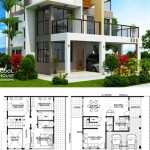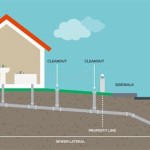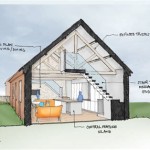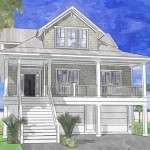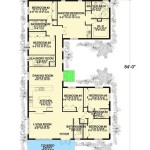Creating The Perfect Bluebird House Plans Free
Attracting bluebirds to your yard offers a unique opportunity to observe these beautiful creatures and contribute to their conservation. Bluebird populations faced significant decline in the past due to habitat loss and competition with introduced species. Providing suitable nesting boxes, or bluebird houses, is a vital step in supporting their recovery. Fortunately, accessing free bluebird house plans allows individuals to construct these essential habitats without incurring additional costs. However, simply finding any free plan is not enough; selecting a plan that adheres to specific dimensions and design principles is crucial for ensuring the safety and success of bluebird nesting.
The design of a bluebird house critically impacts its attractiveness and suitability for bluebirds. Factors such as entrance hole size, floor dimensions, roof overhang, and drainage all play significant roles in determining whether bluebirds will choose to nest in a particular house and whether their offspring will thrive. Therefore, understanding the core elements of effective bluebird house design is paramount before embarking on the construction process. By focusing on key features and adhering to recommended specifications, individuals can significantly increase the likelihood of attracting bluebirds and contributing to their well-being.
Essential Dimensions and Features for Bluebird Houses
The precise dimensions and features of a bluebird house are not arbitrary; they are based on the specific needs and behaviors of bluebirds. Adhering to these guidelines helps create a secure and inviting nesting environment, minimizing the risk of predation, competition, and environmental hazards. Deviation from established standards can have negative consequences, potentially deterring bluebirds or even endangering their young.
The entrance hole size is perhaps the most critical dimension. A 1.5-inch diameter hole is generally recommended for Eastern Bluebirds, preventing larger birds like starlings from entering and dominating the nest box. For Western Bluebirds and Mountain Bluebirds, a 1 9/16-inch diameter hole is often preferred. It is essential to use the correct size specific to the bluebird species prevalent in your geographic location. A hole that is too large will allow access to predators and competitors, while a hole that is too small may prevent bluebirds from entering.
The floor dimensions of the bluebird house should ideally be around 5x5 inches. This provides adequate space for the bluebird parents to build a nest and comfortably raise their young. A smaller floor area may result in overcrowding and increased competition among nestlings. A larger floor area, while seemingly beneficial, may attract larger, undesirable species. The height of the box, from the floor to the bottom of the entrance hole, should be between 6 and 8 inches. This depth helps protect the nestlings from predators reaching into the box.
Proper ventilation and drainage are essential for maintaining a healthy environment within the nest box. Ventilation holes near the top of the box allow for air circulation, preventing the build-up of excessive heat and moisture. Drainage holes in the floor help to remove rainwater, preventing the nest from becoming waterlogged. Insufficient ventilation can lead to overheating, especially during hot summer months, which can be fatal to nestlings. Similarly, inadequate drainage can result in the development of mold and bacteria, compromising the health of the nest.
The roof of the bluebird house should have an overhang of at least 2 inches in the front and 1 inch on the sides. This overhang provides protection from rain and direct sunlight, helping to regulate the temperature inside the box. A sloping roof is also recommended to facilitate water runoff. A tightly fitted roof is vital to prevent rain from entering the box, which can damage the nest and chill the nestlings.
Avoid using perches on the exterior of the bluebird house. Perches can actually be detrimental, providing a foothold for predators like snakes or raccoons, making it easier for them to access the nest. Bluebirds do not require a perch to enter the nesting box; they are perfectly capable of flying directly to the entrance hole.
Choosing the Right Materials for Construction
The materials used to construct a bluebird house influence its durability, insulation, and overall suitability for bluebirds. Selecting appropriate materials ensures that the house will withstand the elements and provide a safe and comfortable nesting environment for years to come. Certain materials are better suited for bluebird house construction than others, considering their weather resistance, toxicity, and ease of use.
Untreated wood is the preferred material for building bluebird houses. Cedar, redwood, and cypress are excellent choices due to their natural resistance to rot and insects. These woods do not require chemical treatment, which could be harmful to bluebirds. Pine can also be used, but it is less durable and may require treatment with non-toxic wood preservatives. Avoid using pressure-treated wood, as the chemicals used in the pressure-treating process can leach into the nest and harm the bluebirds.
The thickness of the wood should be at least ¾ inch to provide adequate insulation. Thicker wood helps to regulate the temperature inside the box, keeping it cooler in the summer and warmer in the winter. Thin wood can lead to significant temperature fluctuations, which can be stressful or even fatal for nestlings. The choice of wood thickness will impact the overall weight and cost of the bluebird house, but the added insulation is a worthwhile investment in the long term.
Avoid using plywood or particleboard, as these materials tend to delaminate and disintegrate when exposed to moisture. They also often contain formaldehyde, which can be toxic to bluebirds. While plywood might seem like a cost-effective option, its lack of durability makes it unsuitable for long-term use. The cost of replacing a bluebird house constructed from plywood will ultimately outweigh any initial savings.
Screws or nails should be used to assemble the bluebird house. Screws are generally preferred, as they provide a stronger and more durable connection than nails. Use galvanized or stainless steel screws to prevent rusting. Ensure that the fasteners are flush with the surface of the wood to prevent injury to the bluebirds.
The exterior of the bluebird house can be painted or stained, but it is essential to use non-toxic, water-based paints or stains. Light colors are preferable, as they reflect sunlight and help to keep the box cooler. Avoid dark colors, as they absorb heat and can cause the interior of the box to overheat. Only paint or stain the exterior of the box; do not paint or stain the interior, as this can be harmful to the bluebirds.
Strategic Placement and Maintenance of Bluebird Houses
The location of a bluebird house significantly impacts its occupancy rate and the success of nesting attempts. Bluebirds have specific habitat preferences, and placing the house in an appropriate location that minimizes competition and predation is crucial. Regular maintenance is also essential for ensuring the long-term viability of the bluebird house and the health of its inhabitants.
Bluebird houses should be placed in open areas with short grasses and scattered trees or shrubs. Bluebirds prefer areas where they can easily spot insects, their primary food source. Avoid placing houses in heavily wooded areas or areas with dense ground cover, as these habitats are more attractive to other bird species that may compete with bluebirds for nesting sites.
Mount the bluebird house on a pole or post, ideally between 5 and 6 feet above the ground. This height provides adequate protection from ground predators. The pole or post should be smooth and difficult for predators to climb. Consider using a predator guard, such as a stovepipe baffle or a Noel guard, to further deter predators. These guards are designed to prevent snakes, raccoons, and other animals from reaching the nest box.
Face the entrance hole away from prevailing winds and rain. This helps to protect the nest from the elements. Ideally, the entrance hole should face east or southeast, providing morning sun but avoiding the intense afternoon heat. Avoid facing the entrance hole directly into strong winds or heavy rain, as this can make it difficult for the bluebirds to enter and exit the box.
Monitor the bluebird house regularly, especially during the nesting season. Check for signs of nesting activity, such as nest building or the presence of eggs or young. Remove any competing nests from other bird species, such as house sparrows, which can be aggressive and displace bluebirds. House sparrows are not native to North America and are a significant threat to bluebird populations.
Clean out the bluebird house after each nesting season. This helps to remove old nesting material, which can harbor parasites and diseases. Cleaning the box also makes it more attractive to bluebirds the following year. The best time to clean the house is after the last brood has fledged or in the late winter or early spring before the nesting season begins. Wear gloves and a mask when cleaning the box to protect yourself from potential health hazards.
Repair any damage to the bluebird house promptly. Check for cracks, holes, or loose screws. A damaged house can be vulnerable to the elements and predators. Making timely repairs ensures that the house remains a safe and suitable nesting site for bluebirds. Replace any damaged or worn parts as needed to maintain the integrity of the structure.

Creating Bluebird Habitat Free House Plans

Blue Bird House Plans Free Diy Kits

Bluebird Birdhouse Plans Complete Step By Instructions For Building A Bird House

Bluebird Bird House Plans Free Kits

Birdhouse And Nest Box Plans For Several Bird Species The Birders Report

Eastern Bluebird Birdhouse 70birds Plans Index

Bluebird House Plans For Eastern Blue Birds

Birdhouse And Nest Box Plans For Several Bird Species The Birders Report

Free Bluebird House Plans Multiple Designs

How To Build A Bluebird House With Pictures Wikihow
Related Posts

